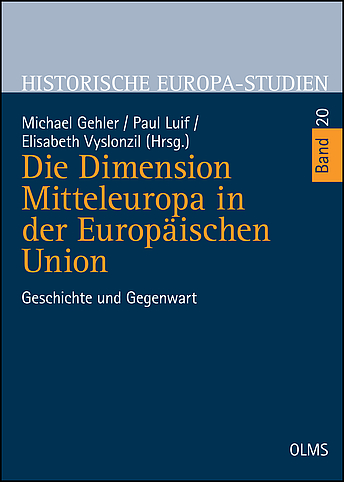Gehler | Luif | Vyslonzil
Die Dimension Mitteleuropa in der Europäischen Union
ISBN 978-3-487-15268-4
englischIn the region between Germany and Russia/the Soviet Union a number of nation states arose in the 20th century which needed to find their own place within Europe. Membership of the European Union enabled them to influence decision processes in the EU. In this book the historical contexts and conceptions of Central Europe are analysed, with an initial emphasis on Germany. The Central European context of domestic and foreign policies in Hungary, Slovenia, Poland, Slovakia and Austria after 1945 is then examined from various perspectives. Two chapters pose specific questions for discussion: the position of the churches in Central Europe under the communist dictatorships, and the position of Austria in Central Europe. The economic effects of the Euro crisis on this region are also considered. The authors, from various European countries, emphasise the significance of Central Europe in the European Union as a bridge to the east. As a counterpoint there is a critical examination of the ‘phantom’ of Central Europe. The concluding essays suggest that, while there may be no precise geographical definition of this region, its potential in the European Union nonetheless remains undervalued.
Alles in allem stellt das Buch einen Sammelband dar, wie ihn sich Integrationspolitiker wünschen: Klar im Konzept, geschrieben von Experten zum jeweiligen Thema, und trotz der Voraussetzungen eines Sammelbandes ohne Redundanzen sowie durch ein kohärentes Narrativ geprägt. (Peter Picher, Das Historisch-Politische Buch 3/2016) Im Raum zwischen Deutschland und Russland bzw. der Sowjetunion entstand im 20. Jahrhundert eine Reihe von Nationalstaaten, die ihre Position in Europa erst finden mussten. Die Mitgliedschaft in der Europäischen Union ermöglichte ihnen, Entscheidungsprozesse in der EU zu beeinflussen. In diesem Buch werden die historischen Rahmenbedingungen und Mitteleuropakonzepte analysiert, wobei zunächst besonders auf Deutschland eingegangen wird. Der mitteleuropäische Kontext der Innen- und Außenpolitik von Ungarn, Slowenien, Polen, der Slowakei und Österreich nach 1945 wird sodann aus verschiedenen Perspektiven beleuchtet. In zwei Kapiteln stehen spezielle Fragen zur Diskussion: die Position der Kirchen in Mitteleuropa während der kommunistischen Diktaturen und die Position Österreichs in Mitteleuropa. Daneben geht es auch um die wirtschaftlichen Auswirkungen der Euro-Krise auf diesen Raum. Die aus verschiedenen europäischen Ländern kommenden Autoren dieses Buches betonen die Bedeutung Mitteleuropas in der Europäischen Union als Brücke zum Osten. Als Kontrapunkt gibt es auch eine kritische Auseinandersetzung mit dem „Phantom“ Mitteleuropa. Abschließende Essays weisen darauf hin, dass es zwar keine genaue geographische Definition dieser Region gibt, aber ihr Potential in der EU noch immer unterbewertet wird.


